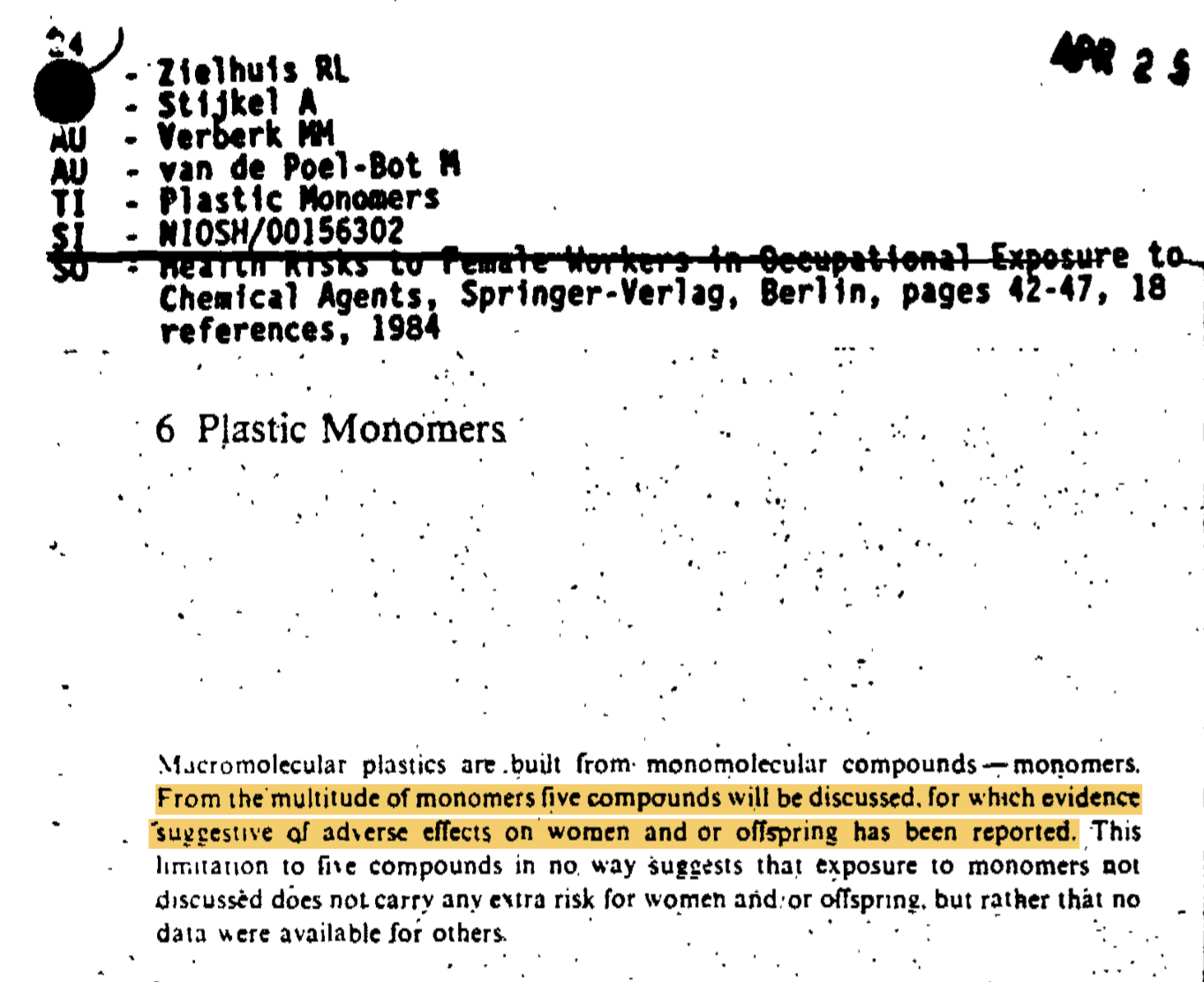Reproductive Health, Occupational Exposure, and Plastic Monomers
In 1984, the scientific publishing house Springer-Verlag published the article “Health Risks to Female Workers in Occupational Exposure to Chemical Agents” to warn the public about the health effects of exposure to plastic monomers such as vinyl chloride, styrene, caprolactam, acrylates, and formaldehyde.

Following the introduction, the article details how study findings suggest that these plastic monomers may affect menstrual and maternal health, as well as neonatal and infant health. Though the studies surveyed in the article are preliminary, the authors call for further study of effects from these plastic monomers on the female reproductive system and on pregnancy.
At the time of publication, manufacturers were mass producing plastics in the wake of World War II due to their affordability and malleability which contributed to consumer demand. Though this article indicates that evidence at the time suggested the harmful health effects of exposure to plastic monomers, manufacturers continue to mass produce them today in products like children’s toys, packaging, household products, building materials, and hospital supplies.
Check out the document here! To learn more about the gendered impact of exposure to toxic chemicals, search “reproductive system,” “pregnancy,” or “fertility.”
